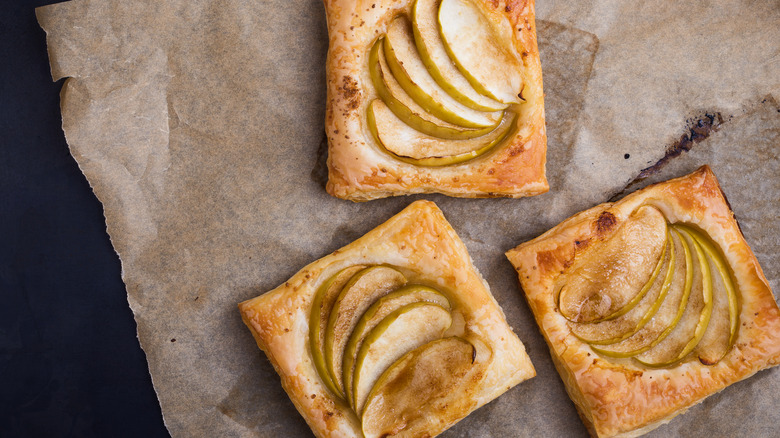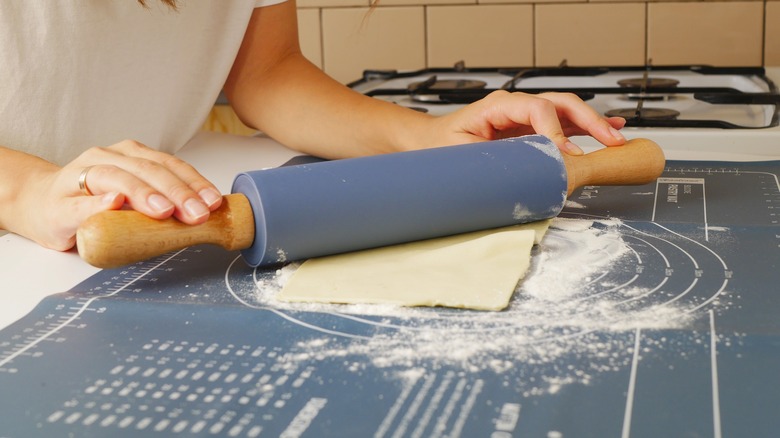You Can Avoid Destroying Puff Pastry With One Simple Rule
Cooking with puff pastry feels like it should be the simplest thing in the world, but there are pitfalls to avoid as you become more familiar with the versatile ingredient. One of the most common mistakes is not taking into account the time needed to bring the dough from frozen to ready-to-cook. Always remember when preparing to use puff pastry to avoid rushing the thawing process, because trying to unfold and roll out puff pastry before it has fully defrosted is the fastest way to break the dough and ruin your dish before you even get started.
Thawing on the kitchen counter is acceptable in the right conditions, though depending on the temperature of your kitchen, if you leave the dough out for too long, you risk it getting too warm, which will compromise the integrity of the dough in the opposite way of not thawing long enough. If you're opting for this method, 30 minutes should be do the trick, but thawing it overnight in the fridge is a more surefire bet to get the desired result.
While on the topic of patience, another common mistake is putting the pastry into the oven immediately after assembling the dish. The butter in puff pastry is temperamental, and going too fast on this step risks it leaking out. Instead, throw it back in the fridge for up to 30 minutes before baking to achieve the ideal texture.
More puff pastry tips
Now that you've got that rule of thumb down, here are a few other things to keep in mind as you go about crafting your perfect pastry. Start rolling out the dough at the center. Avoid rolling the edges of the dough too flat, as that will prevent the dough from rising to its desired shape. Starting in the center and rotating as you go will help keep the edges untouched and ready to form that perfect crust. This might take a little more time than simply rolling it out from one side to the other, but the results will more than make up for the delay.
Make sure to only use "all-butter" dough. The magic of puff pastry comes from the layers of butter interacting with the heat of the oven to form a rich, delicious pastry dough. Puff pastry that isn't all-butter typically substitutes vegetable oil for butter, which interacts with the heat in completely different ways and will not provide the flavor or texture you've come to expect.
And don't throw away those scraps! Puff pastry is a versatile ingredient, primarily because of how easy it is to recycle for future use. Not only can you turn leftover puff pastry trimmings into standalone bite-sized snacks — whether savory or sweet — but if you're careful, you can even reassemble the scraps into a new puff pastry sheet to keep the baking party going even longer.


